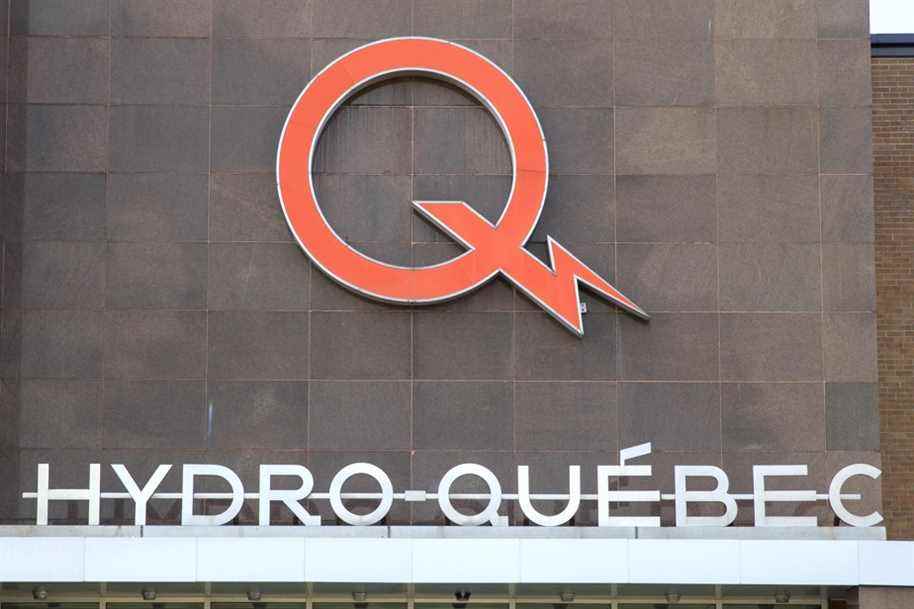Hydro-Québec’s electricity sales hit an all-time high in 2021, helping the company rake in a record net profit of $3.5 billion.
Updated yesterday at 5:27 p.m.
This is an increase of more than 50% on the results of the previous year, which had been weighed down by the health crisis. “We managed to pull out all the stops,” said President and CEO Sophie Brochu. “The economy was there, the demand in Quebec was there, the demand on the American markets was there, the hydraulicity was good”, she listed Thursday during a virtual meeting.
The mild temperatures of last winter are the only element to have played against Hydro-Québec in 2021, indicated its vice-president of finance, Jean-Hugues Lafleur. If the winter had been normal, the net profit would have been “one hundred million” higher, he said.
This record profitability means that the Government of Quebec, to which the Crown corporation pays most of its profits, will receive a dividend of $2.7 billion, the highest ever received since Hydro-Quebec’s existence.

The company benefited from both an increase in electricity consumption in Quebec and an increase in volume and prices in export markets.
In Quebec, electricity sales peaked at 175.2 terawatt hours, thanks to the resumption of commercial and industrial activities. The price of aluminum, which reached a record level in 2021, also contributed to the profitability of Hydro-Québec, whose contracts with aluminum smelters are linked to the price of the metal on the international market.
The rise in the price of aluminum is continuing this year, noted Mr. Lafleur, “which is good news for Hydro-Québec in the long term”.
In export markets, sales increased by 15% to 35.6 terawatt hours. This is the first time since 2018 that net exports have exceeded the 35 terawatt-hour threshold.
The average price of sales on the New York and New England markets was also higher due to the general increase in the price of other forms of energy, in particular that of natural gas. Hydro-Québec obtained an average price of 4.7 cents per kilowatt hour exported, compared to 4.2 cents in 2020.
Furthermore, Hydro-Québec benefited from the best conditions on the financial markets. Its financing costs have gone down, and the cost of its pension plan has also gone down. Together, these two factors had an upward effect of nearly 500 million on net income.
Energir and yellow vests
The agreement concluded between Hydro-Québec and Énergir to convert part of the heating from natural gas to electricity was unanimously denounced because it provides that Hydro-Québec will pay up to $400 million to the gas distributor, which will add 1.4% to the annual increase in electricity rates.
Sophie Brochu, who was at the head of Énergir before heading Hydro-Québec, maintained that this agreement was necessary. This is the best we could do to manage peak demand, she argued. “If we could have done it cheaper, we would have done it. »
The CEO recalled that the demand for electricity was growing and that to meet future peak demand, it would have been necessary to build new facilities with a capacity of 2,000 megawatts, the equivalent of the Romaine complex. Other solutions, such as storage, would not have been enough and would have cost more, according to her.
“Electricity bills would explode, and that would make yellow vests in Quebec,” she said.
Reorganization
At the same time as its annual results, Hydro-Québec announced a reorganization of its activities into four groups to better deal with the energy transition.
As soon as she arrived at the head of Hydro-Québec in 2021, Sophie Brochu had eliminated the Generation, Distribution and Transmission divisions, which had been in place for more than 20 years. “The concept of a division, by definition, divides and does not reflect our aspiration to work in a collaborative way,” explained the leader in a message to employees.
The four new groups will better reflect the activities of the state company “from behind the dams to behind the meters”, she illustrated. These groups are Strategy and Development, Integrated Energy Planning, Infrastructure and Energy System, and Operations and Customer Experience.
The changes, which will be in effect from February 28, are not intended to reduce the organization’s workforce, assured Mr.me Leaflet.
Learn more
-
- 4.2 billion
- Amount that Hydro-Québec has invested in 2021, mainly in the construction and repair of substations and transmission facilities. This is a 25% increase from 2020, when the pace of investment was slowed by the pandemic.
source: Hydro-Quebec

